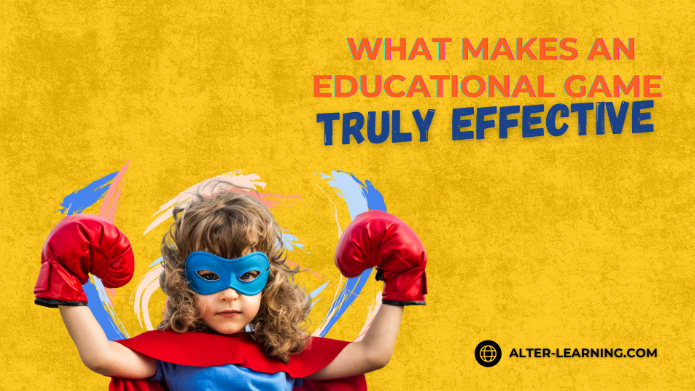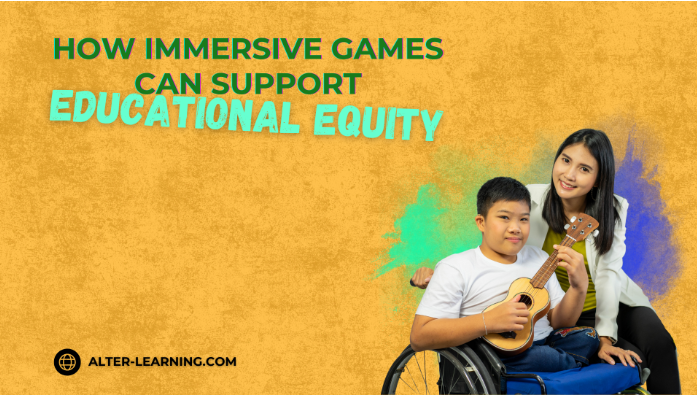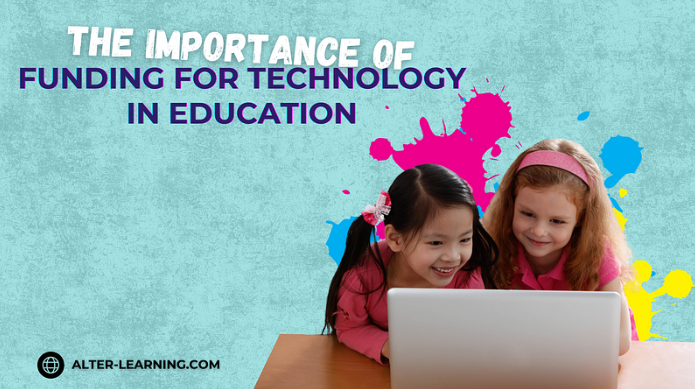In the world of educational technology, “engagement” is often treated as the gold standard. If a student is clicking, playing, or staying logged in, the assumption is that learning must be happening. But engagement is only part of the picture. For educational games to truly support meaningful outcomes, they must also promote understanding, reinforce academic standards, and encourage deep thinking. A game that’s fun to play may open the door—but the value lies in what happens after students step through it. Alter-Learning is here to help with the process.
Redefining What “Works”
An educational game may be engaging without being educational. Flashy graphics and fast-paced interactions can hold attention, but if they don’t align with what students are meant to learn, the experience risks becoming empty entertainment. Effective educational games go further. They are designed not just to keep students interested, but to move them toward specific learning goals.
A high-quality educational platform typically integrates:
- Curriculum alignment with standards like NGSS, ISTE, or CCSS,
- Clear learning objectives embedded into gameplay mechanics,
- Assessment points that allow educators and students to track progress,
- Opportunities for reflection, feedback, and critical thinking.
By grounding the game experience in well-defined pedagogical goals, these platforms can do more than engage—they can educate.
Turning Play Into Practice
The best educational games turn academic skills into tools students use to progress. Solving math puzzles becomes the way forward, not a separate task. Understanding photosynthesis helps balance an ecosystem simulation. Applying Newton’s laws unlocks a challenge in a virtual physics environment. This kind of embedded learning can help students internalize concepts more effectively because they’re learning by doing, not just by observing.
Effective educational games may feature:
- VR math games that visualize abstract equations as spatial challenges,
- Virtual labs where students experiment with chemical reactions in safe, simulated environments,
- Engineering challenges that ask learners to apply design thinking and problem-solving under real-time constraints,
- AR science experiments that bring interactive inquiry to mobile devices and classrooms.
These formats can foster both conceptual understanding and skill development.
Supporting Transfer and Critical Thinking
Learning isn’t just about recall. It’s about transfer—the ability to apply knowledge in new and unfamiliar situations. Educational games that push students to make decisions, analyze scenarios, and adapt their strategies can support this kind of higher-order thinking.
Tools that encourage transfer often include:
- Multiple solution paths, allowing students to experiment and iterate,
- Simulation-based problems that mimic real-world dynamics,
- Collaborative tasks where learners must share information and make joint decisions,
- Narrative elements that connect content to ethical dilemmas or social contexts.
By situating learning in dynamic environments, games can help students develop not just skills but flexible, critical thinking.
Balancing Challenge and Support
A game that’s too easy may bore students. A game that’s too hard may frustrate them. Effective educational platforms aim to hit the “challenge sweet spot”—where students are pushed just beyond their current skill level, but supported enough to succeed.
This often means including:
- Scaffolding that adjusts difficulty based on performance,
- Hints or checkpoints that allow students to reflect without losing momentum,
- Immediate feedback that encourages learning from mistakes,
- Pacing options that let students pause, repeat, or progress at their own speed.
This balance allows learners to feel challenged and capable—conditions that can promote both confidence and persistence.
Measuring What Matters
Finally, effective educational games provide data—not just on completion, but on learning. Teachers need tools that help them understand what their students know, what they’re struggling with, and how their thinking is evolving.
Educational games have enormous potential, but their impact depends on thoughtful design. When engagement is paired with clear objectives, embedded practice, real-world transfer, and actionable insights, learning can move from a surface-level experience to something deeper and more enduring. Effective educational games don’t just hold attention—they help transform it into understanding.
Follow Alter-Learning for more insights into immersive education, edtech success stories, and the future of learning. Want to explore how VR/AR could transform your school or learning platform? Let’s connect.




